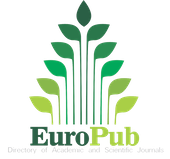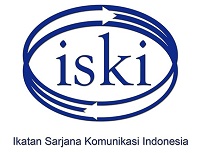The Practice of Digital Ethics among TikTok Content Creators
Abstract
Keywords
Full Text:
PDFReferences
Abdi, H. (2021). Profesional Adalah Istilah yang Bersangkutan dengan Profesi, Berikut Penjelasannya. Retrieved April 23, 2022, from https://hot.liputan6.com/read/4679433/profesional-adalah-istilah-yang-bersangkutan-dengan-profesi-berikut-penjelasannya.
Ahmad, S. A. (2021). Pengguna TikTok di Indonesia Mengalami Peningkatan Tiga Kali Lipat Selama Setahun. Retrieved April 23, 2022, from https://bogor.suara.com/read/2021/10/23/110736/pengguna-TikTok-di-indonesia-mengalami-peningkatan-tiga-kali-lipat-selama-satu-tahun?page=all
Afrilia, A. M. (2018). Personal Branding Remaja di Era Digital. Mediator:Jurnal Ilmu Komunikasi, 11(1), 20-30.
Anggraeni, R. (2022). Profesi dan Gaji Content Creator di Indonesia, Ada yang Capai Ratusan Juta Rupiah? Retrieved April 10, 2022, from https://www.inews.id/finance/bisnis/profesi-dan-gaji-content-creator-di-indonesia-ada-yang-capai-ratusan-juta
Holton, A. E, Coddington, M., & de Zuniga, H. G. (2013). Whose News? Whose Values? Citizen Journalism and Journalistic Values through the Lens of Content Creators and Consumers. Journalism Practice, 7(6), 720-737. https://doi.org/10.1080/17512786.2013.766062
Brown, S. A. (2014). Conceptualizing Digital Literacies and Digital Ethics for Sustainability Education. International Journal of Sustainability in Higher Education, 15 (3), 280-290.
Databooks. (2021). Indonesia Jadi Pasar Kedua Terbesar TikTok di Dunia Pada Tahun 2020. Retrieved 23 April, 2022, from
Deloitte. (2021). Roadmap Literasi Digital 2020-2024 Kementerian Komunikasi dan Informatika. Laporan Substansi. http://literasidigital.id/books/roadmap-literasi-digital-2020-2024-full-deck/
Fardiah, D., Darmawan, F., Rinawati, R., Abdul, R., & Lucky, K. (2020). Media Literacy for Dissemination Anticipated Fake News on Social Media. Mediator, Jurnal Komunikasi, 13 (2), 278-289.
Kusumastuti, F., & Astuti, S. I. (2021). Modul Etis Bermedia Digital. Jakarta: Kementerian Komunikasi dan Informatika.
Lubis,R. A., Sinaga, R., & Fauza, A. (2022). Adolescent Digital Literacy and Ethic. Journal of Humanities, Social Sciences and Business, 1(3),
Luke, A. (2018). Digital Ethics Now. Language and Literacy. 20(3), 185-198.
Meneghello, J., Thompson, N., Lee, K., Wong, K. W., & Abu-Salih, B. (2020). Unlocking Social Media and User Generated Content as a Data Source for Knowledge Management. International Journal of Knowledge Management, 16(1), 101–122. doi:10.4018/ijkm.2020010105
Noh, Y. (2016). A study on the effect of digital literacy on information use behavior. Journal of Librarianship and Information Science, 1-31. DOI:10.1177/0961000615624527
Rahardaya, A. K., & Irwansyah. (2021). Studi Literatur Penggunaan Media Sosial TikTok Sebagai Sarana Literasi Digital Pada Masa Pandemi Covid-19. Jurnal Teknologi dan Informasi Bisnis, 3(2), 308-319. https://doi.org/10.47233/jteksis.v3i2.248
Rahardjo. (2017). Studi Kasus dalam Penelitian Kualitatif: Konsep dan Prosedurnya. Retrieved from http://repository.uin-malang.ac.id/1104/1/Studi-kasus-dalam-penelitian-kualitatif.pdf.
O’Reilly, M., Levine, D., & Law, E. (2020). Applying a‘digital ethics of care’ philosophy to understand adolescents’ sense of responsibility on social media. Pastoral Care In Education, 1-17. DOI: 10.1080/02643944.2020.1774635
Park, S. (2012). Dimension of Digital Media Literacy and The Relationship With Social Exclusion. Media International Australia, 142(1), 87-100
Plaisance, P. L. (2013). Virtue Ethics and Digital ‘Flourishing’: An Application of Philippa Foot to Life Online. Journal of Mass Media Ethics, 28, 91–102. DOI: 10.1080/08900523.2013.792691
Pramesti, O. L. (2022). Peristiwa Pengeroyokan Ade Armando dan Belajar Bijak Bermedia Sosial. Retrieved April 26, 2022, from https://www.kompas.com/tren/read/2022/04/12/184009665/peristiwa-pengeroyokan-ade-armando-dan-belajar-bijak-bermedia-sosial?page=all
Pratama, K. Z. (2022). TikTok Diprediksi Jadi Medsos Terbesar Ketiga Pada Tahun 2022. Retrieved April 28, 2022 < https://tekno.kompas.com/read/2022/01/03/08070077/TikTok-diprediksi-jadi-medsos-terbesar-ketiga-pada-2022?page=all>
Rawanoko, E. S., Komalasari, K., Al-Muchtar, S., & Bestari, P. (2021). The Use of Social Media In Ethic Digital Perspective. Jurnal Civics: Media Kajian Kewarganegaraan, 18(1), 148 – 157. DOI: 10.21831/jc.v18i1.40036
Stephanie, C. (2021). Apa itu FYP di TikTok dan Bagaimana cara Kerjanya. Retrieved April 28, 2022 from
Taufik, C. V., & Suhaeri. (2020). Media Literacy in Information Chaos Era: Qualitative Study Bandung Literacy Activist. Mediator, Jurnal Komunikasi, 13(1), 132-140.
DOI: https://doi.org/10.29313/mediator.v15i2.10460
Refbacks
- There are currently no refbacks.

This work is licensed under a Creative Commons Attribution 4.0 International License























